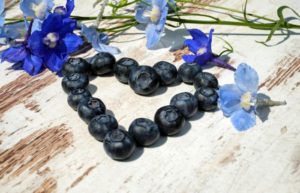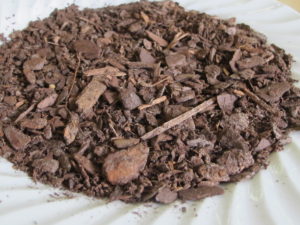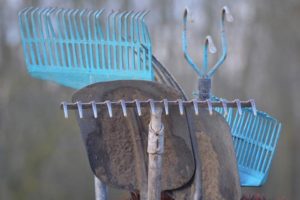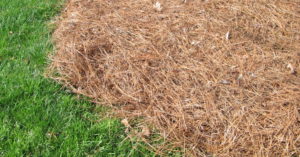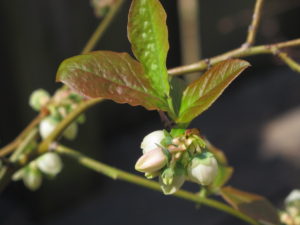
Planting a Blueberry Patch?
July is National Blueberry Month, but it’s a rare day when I don’t consume blueberries. For many years, breakfast 5 or 6 days per week consisted of plain Cheerios, a handful of English walnuts, a handful of fresh strawberries, and a handful of fresh blueberries. Throw in half a nectarine or peach in season, or part of a banana, and I’m “doin’ the body good”. More fruit and nut than anything else.
Today is Day One
Until today. This morning, when I was researching nutritional information on the luscious little berry, I read the caution about eating blueberries and dairy, especially high-fat dairy, at the same time. The super-healthy antioxidants found in blueberries (strawberries, too) lose their desired effect when dairy and berries are eaten together.
Eating a lot more blueberries will increase the level of antioxidant activity, even in the presence of dairy. Apparently, this goes for strawberries as well. But this can get expensive, especially when berries are out of season.
So, all of you smoothie drinkers out there who use yogurt as a base might consider saving the blueberries until a few hours later. Or skip the yogurt. And today, the blueberry partnership comes to an end in my kitchen. At breakfast, anyway.
Blueberry Nutrients
A few berries in the bowl won’t hurt, and they certainly have other healthful reasons for including them. A ½-cup serving contains:
- 40 calories
- 1 g. protein
- <1 g. fat
- 11 g. carbohydrate
- 7 g. sugars (blueberries have a low glycemic index of 53)
- 2 g. fiber
- high amounts of vitamins A, C, K (blood clotting, bone health, heart health), and the mineral, manganese
But it’s the antioxidant benefit I’m after more than anything else. Blueberries contain huge numbers of antioxidants, including the flavonols, quercetin (linked to lower blood pressure and reduced heart disease) and myricetin (cancer, diabetes).
Anthocyanins include malvidin and delphinidin, found predominantly in the blueberry skins.
What Antioxidants Do
Blueberries have the highest antioxidant levels among commonly found fruits and vegetables—when they’re not eaten with dairy products. Anthocyanins are one group of antioxidants, the pigments that give red, blue, and purple fruits and vegetables their colors.
Antioxidants are health-promoting flavonoids belonging to a huge group of polyphenols. They circulate through our vascular system and help protect us from the damaging effects of free radicals. Those free radicals are produced as normal products of metabolism. They also help prevent free radical cell damage due to exposure to alcohol, cigarette smoke, and other pollutants.
A free radical, lacking an electron or two in the molecule’s outer orbit, is unstable as it tries to steal an electron from a nearby molecule, replicating the instability. This can lead to the development of cancerous cells if it happens in DNA. Antioxidants neutralize the unstable molecules.
More Benefits
In addition to helping prevent oxidative DNA damage, potentially leading to cancer, and slowing down the aging process by 2½ years, antioxidants in blueberries are also linked to lower LDL cholesterol, the “bad” cholesterol that can lead to heart disease. But there are many other factors that contribute to this illness. One of those factors is inflammation, and blueberries—you guessed it—are also anti-inflammatory.
Many studies point to the positive effects blueberries have on blood pressure, type 2 diabetes, urinary tract infections, brain function, and muscle damage after strenuous workouts. Antioxidants help our bodies produce more nitric oxide and can relax blood vessels, helping to lower blood pressure.
This little fruit also slows the progression of age-related macular degeneration and glaucoma. There are plenty of reasons to include blueberries and other colorful plant pigments in the diet.
One clue to their growing popularity is the fact that per capita blueberry consumption tripled between 2000 and 2015, to just over 3 pounds per person per year. When I move to a place with more land, planting a blueberry patch is high on the list of garden projects.
Prepare for Planting Your Blueberry
Sun
First, locate your blueberries where they’ll receive at least 6 or 7 hours of direct sunlight. In areas with hot summers, dappled shade in mid-afternoon helps prevent stress. Consider the tree canopy and how soon it might begin to cast too much shade on your blueberry garden.
For all permanent plantings, I like to give plants an excellent base to root into. The section in Soil Prep 101 for Your Vegetable Garden headed “Prepare for Soil Prep” offers details on getting started, with a few exceptions for blueberries. Blueberries, in particular, require very acidic soil.
A soil test is recommended to get an accurate reading of the soil’s fertility, pH, and tilth. Proper planting and management will reward you with perhaps 20-30 years of blueberry harvests.
Drainage
Very dry soil is difficult to dig, so watering the area a few hours or the day before starting the process will make it easier. I usually use a sturdy garden fork for the initial dig.
Loosen the soil 15-20″ deep, and 3 or 4 times the width of the root ball. Add a cubic foot or more, depending on how bad the soil is, of partially composted pine bark chips, also called soil conditioner or pine fines (photo, above) to facilitate drainage. Don’t layer the pine fines; instead, incorporate them into the full depth of excavated soil.
If you have sandy loam to begin with, you might not need as much soil conditioner. Here in the piedmont of North Carolina, however, we have heavy, sticky clay. Clay soil holds moisture and fertility, but it requires amendments to improve the drainage.
Coarse sand (not play sand, which is too fine) is another material that can improve drainage, but it should be used in conjunction with organic matter.
Loosening the soil and adding amendments and plants raises the finished level of the bed. Take this into consideration as you sculpt the land. Blueberries need good drainage, and you want to make sure you didn’t create a berm where the water has nowhere to drain. Hire a professional gardener, if you prefer, to till and prepare the soil according to how you want it done.
If you’re planting the shrubs in a row or in a group, the plants will thank you if you dig the entire bed instead of just the area around each plant. Remember to place the tallest-growing varieties on the north side of the garden (northern hemisphere). Concentrate the peat moss and compost near the plants, but add some peat and pine fines between them as well.
Gypsum
Gypsum (calcium sulfate) can be added annually for several years to soils that are especially intractable. It works by “flocculating”, or gathering, tiny particles of clay soil into larger particles, opening up minute channels through the soil profile. The larger air pore space allows water, air, and roots to more easily penetrate the soil.
Unlike lime (no lime for blueberries!), gypsum doesn’t raise the pH of the soil. Pelleted gypsum can be incorporated into the soil at the beginning of the process and applied as a top dressing in subsequent years. Water will carry it lower into the soil.
Soil PH
Because blueberries are sensitive to high salt content, do not add mushroom compost or composted manure to the garden. Manure also can raise the pH of the soil.
Our soils in the eastern U.S. tend to be acidic, but not acidic enough for blueberries. Blueberry plants need a pH below 5.5, even as low as 4.3. Peat moss is very acidic, and blueberries love it. In addition to the pine fines, add at least one cubic foot of pre-moistened peat moss per plant. Again, thoroughly incorporate the peat with the top 12″ to 15″ of soil, breaking up the clods as much as possible.
Pockets of dry peat moss buried in soil will remain dry for a long period of time because it resists absorbing water. Clay readily absorbs water; you need to thoroughly mix the clay particles into the peat moss. Pre-moistened peat moss is easier to work with.
A moderate amount of aged compost can be incorporated into the top 6-8″ of soil. The amended soil should be at least 3 times the width of the root ball. Sure, that sounds like work, and the plants probably would survive with a lesser effort, but greater effort equals greater rewards!
Rake the area smooth.
Time to Plant Your Blueberry
Before removing the blueberry plant from its pot, water it. This will help the root ball slide out of the pot. Don’t pull the plant by the stem; this could damage the delicate root system. Avoid heavily damaging the roots of blueberries because they lack root hairs. Keep the label for each plant with the plant.
Let gravity help you. Tilt the pot almost upside-down and see if the plant comes out without too much coaxing. Be ready to catch it before it lands on the ground; stems are brittle and easily broken. If the roots still won’t let go of the pot, cut away the plastic pot with a utility knife or sharp pruners. Or use an old bread knife along the inside of the pot, separating the pot from the outside of the root ball.
Know how large the plants will grow when they reach maturity in order to gauge how far apart they should be planted. Plants often grow larger than the size indicated on labels. And to maintain the health of the foliage, spacing them farther apart assures good air circulation.
Grab Your Shovel
Hollow out a hole in the prepared garden. The depth should be almost the height of the root ball. Allowing ½” to 1″ of the root ball to protrude above the finished grade is advised.
Never cover the original root ball with new soil; doing so would suffocate the roots and damage the stem. Blueberries prosper when planted in a raised bed, ensuring good drainage and high oxygen content at the crown of the plant.
Use a cultivator to loosen some of the roots on the outside of the root ball, or score it several times with a knife, slicing shallowly from top to bottom. This light damage will stimulate the root system to quickly send out new roots.
You want to encourage the plant to grow roots away from the plant and into the amended soil instead of circling around the original root ball. Whenever you add anything into the landscape, do not dig a bowl with a smooth surface. Use a shovel to create jagged edges, which will direct growing roots into new territory.
Now plant the blueberry, backfilling with amended soil. Guide the loosened roots out into the prepared ground. Using medium pressure, firm the soil. Loosely packed soil will settle, possibly dragging the plant too deep into the ground.
First Pruning
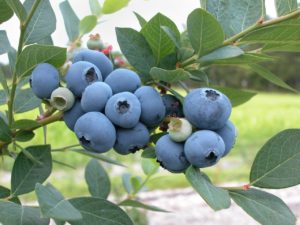
With young plants, remove very thin twigs, crossing or damaged stems, and cut back long stems to remove most flowers. Mature plants at the nursery, grown in large pots—okay, experts still recommend pruning them, but I’ve had no problems letting them set some fruit the first year when the plants are well cared for.
Label the Blueberry Plant
For new plants, bury the label on the north side of the stem. This way, you’ll know where to find the label if you need to know the cultivar’s name. Plastic labels that are shaded will last a long time. It’s not a bad idea to take pictures or to record this information in a journal. Keep track of the plants’ names in case one or two should perish, because…
…blueberries are particular about their pollinizers—the plants that provide the pollen. So, you’ll want to know the names of plants that need to be replaced. All blueberries bear fruit, but you don’t want to create a gap in bloom cycles by guessing which varieties to buy. Ensuring an uninterrupted succession of flowers and mature pollen throughout the bloom season yields an abundant harvest of beautiful berries.
Mulch
Once all the blueberries have been planted and the soil raked smooth, apply the mulch. I prefer to use pine products, such as 4″ of pine straw or 2″ to 3″ of pine bark nuggets for blueberries. An inch of pine fines also works. Don’t apply mulch against the stems.
Avoid walking over the newly prepared garden to prevent compressing the soil.
Mulch helps cool the soil and hold in moisture. It also helps prevent most weeds from growing, which compete with blueberries for moisture and nutrients. More mulch will be needed as it decomposes, but pine bark chunks can last a few years.
Shredded hardwood mulch is attractive and readily available. And it holds well on a slope, except during heavy rains. A thin layer, an inch or so, is acceptable. But too much hardwood will raise the pH of the soil. As long as you can maintain the pH that blueberries require, using a thin layer of shredded hardwood is okay. But pine straw and pine nuggets are preferred.
If the soil pH is too high, switch from shredded hardwood to pine bark nuggets. In fact, specialists recommend alternating between pine products and hardwood every several years. Changing the pH with mulch is a very slow process. So, you’ll need soil acidifier, which is available at garden centers, to lower the pH if it drifted too high.
Water
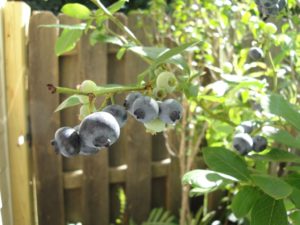
Blueberry ‘Patriot’, in a pot for several years.
If you can’t plant the blueberries right away, they might require water every day.
Water the new garden well. For the next 2 weeks, or until the plants root in, the only water available to them is the moisture held by the original root ball. Naturally, if ample rain falls while they’re rooting in, you might not need to water. Dry clay soil in the bed will steal moisture from the plant’s root ball.
If the plant was being watered daily at the nursery, it might require daily watering after planting. Large leafy plants dry fast in warm, breezy conditions. New growth on the tips of the stems visibly wilts if the roots have been damaged or if the soil is dry. Having no root hairs subjects blueberries to early wilting if moisture levels drop too low. Water immediately, or those tender new leaves will turn brown.
Direct water from the hose over the original root ball. Feel the water first, to make sure it’s not hot. Give each plant at least 3 gallons of water, more for larger specimens. Water the soil a few inches beyond the root system to encourage new roots to grow toward the moisture. Monitor soil moisture levels for the first growing season.
Tap water has a high pH, so regularly irrigated soil will require acidifying.
How Are They Looking?
Do they wilt every day although you water every day or two? Water deeply so that the entire root system is moistened. Shallow watering might satisfy roots near the surface, while those deep in the soil remain dry. As new roots grow into the soil, water more widely around the plants. The original root ball often resists absorbing moisture if it has gone too dry. That’s why we recommend pre-moistening peat moss and watering the potted plant before planting.
Overwatering also can cause wilt. Don’t overdo it. Too much water in clay soil prevents air from reaching the roots. Essentially, they drown. An overwatered plant is less likely to recover. I can’t over-emphasize the importance of good drainage… and that means amending clay soil.
Excessive root injury sustained when planting will cause the plants to wilt. You might need to lightly shade them for a few days to ease the stress. After a week or two, prune off branches that didn’t recover, or leave them for a while longer to see if dormant buds sprout from live wood.
Check to see if the root ball has settled too deeply into the soil. Raise it up if that’s the case. The crown of the plant should be flush with the surrounding soil level, or, preferably, raised a little above it. And make sure all air pockets around the roots have been filled with soil.
If your new blueberries are looking good and starting to grow, congratulations! Blue star!
Settled In
Once the plants begin to root in, after a couple of weeks, you can decrease the frequency of watering. It’s tempting to assume that the recent gentle rain is enough for the next few days. But it might have been only ¼”, which dampens the mulch but not the soil.
If in doubt, dig several inches into the soil near the edge of the original root ball to see whether the soil is running dry or is sopping wet. You don’t want either of those conditions.
One inch of water throughout the garden will moisten the top 4-6″ of soil. Every week during the growing season, the entire garden should receive 1½” of water, and more than that in sandy soil. After the plants have become established, water less often, if you need to at all, but water deeply when you do.
Family Likeness
Looking at the flowers in late winter to late spring, you might have noticed the similarity between blueberry (Vaccinium spp.) flowers and the flowers of Pieris japonica, and those of the sourwood tree, Oxydendrum arboreum. Their flowers resemble little bells.
All of them belong to the family Ericaceae, which includes heaths, heathers, azaleas, and rhododendrons, although these shrubs’ flowers bear less similarity to those of blueberries. Cranberry, bilberry, and huckleberry also belong to the Vaccinium genus.
Gardeners cultivate 50 or 60 species of blueberries around the world. Several species native to the United States and Canada formed the basis for almost all of the many blueberry varieties available today.
New dwarf cultivars of blueberries feel right at home in foundation plantings. Edible landscaping highlights both the ornamental and the edible aspects of growing blueberries.
Headings
Page 1: Planting a Blueberry Patch?, Today Is Day One, What Antioxidants Do (Blueberry Nutrients, More Benefits), Prepare for Planting Your Blueberry (Sun, Drainage, Gypsum, Soil PH), Time To Plant Your Blueberry (Grab Your Shovel, First Pruning, Label the Blueberry Plant, Mulch, Water, How Are They Looking?, Settled In), Family Likeness
Page 2: The 5 Major Groups of Blueberries (Lowbush Blueberry, Northern Highbush Blueberry, Southern Highbush Blueberry, Rabbiteye Blueberry, Half-High Blueberry), Blueberry Maintenance (Water, Mulch, Fertilizer, Pruning, Blueberry Pollination, Disease, Picking), Woodchucks and Friends, Plant Protection, Cage Your Blueberries

